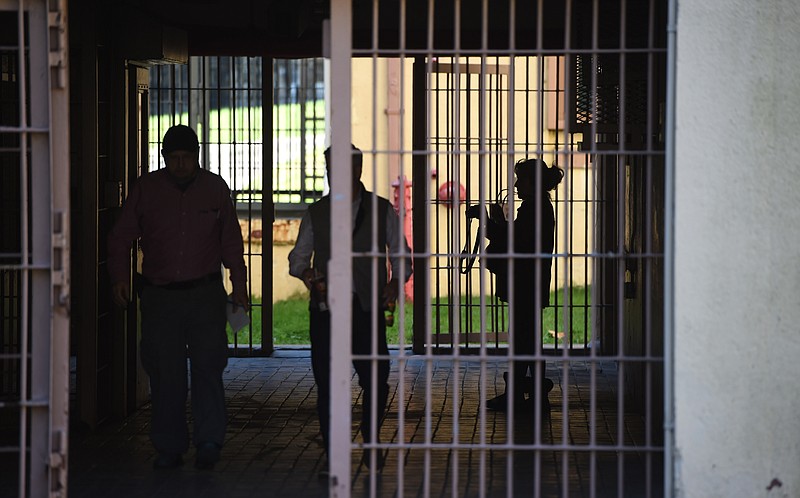PETROS, Tenn. - With the myriad detailed planning and groundwork now mostly done, development of a tourist attraction at the site of a once-notorious prison will be moving forward soon.
But Brian May, one of the principals of the Brushy Mountain Group, wouldn't be pinned down on a timetable for converting the Brushy Mountain State Penitentiary into a huge moonshine distillery complete with such attractions as a museum, prison tours, RV park and music festival venue.
"We couldn't do anything until we had ink on paper," said May, one of three Chattanooga developers spearheading the project, which has involved numerous agreements.
May, with a background in advertising and branding, has joined with entrepreneur Pete Waddington and former Chattanooga mayor Jon Kinsey, who redeveloped Knoxville's Market Square, on the project. After the group was formed, it took 18 months and more than 40 trips to Nashville to get the state's go-ahead to transfer the property to Morgan County.
Other details, from utility changeovers to where to place the RV park, are still works in progress.
"We're still working, with thousands of decisions still to be made," Waddington said.
One selection is set in stone - or rather, an existing concrete pad. The newer lockups for maximum security inmates, which lack historical value, will be razed. A 53-foot-tall moonshine still, with a 4,000-gallon mash cooker, will be placed on those pads.
The four-story prison, with its small cells festooned with the graffiti of bored, desperate men, will remain essentially unchanged.
The developers said they've visited numerous other shuttered prisons that are now tourist attractions, and visitors "want to see prisons as close to the way they were" as when in operation, May said.
Morgan County Mayor Don Edwards said residents "want the site preserved. They don't want it to sit up here and rot away." He said the developers have done everything they said they would do and already have invested heavily.
Residents "may not necessarily be for liquor, but they are for jobs and development," Edwards said. The project is expected to create more than 100 new jobs in the hardscrabble county.
After the developers pitched their idea for new uses for the old lockup, voters in dry Morgan County approved in a 2013 referendum the proposal to allow the distillery, envisioned as one of the largest in the state.
The state transferred ownership of the 280-acre property to Morgan County's 13-member Economic Development Board in January, and the developers have a long-term lease agreement.
A tax incentive - in which a portion of sales-tax revenue generated on site will repay the developers' bond issue to bankroll the project - is also in place.
Designed in the shape of a Greek cross and resembling a castle, Brushy Mountain Prison opened in 1896. It was the only prison in the U.S. with a natural bluff as one prison wall and is tucked into a small valley surrounded by rugged mountains.
During the prison's long history, some of the state's most violent and notorious inmates were housed there. On-site troublemakers were sent to "the hole" - small, dark, solitary cells beneath the prison chapel.
The prison is steeped in lore. At one point during its early days, May said inmates who didn't make their quota of coal production in nearby mines were fastened to posts in the prison yards and whipped. The enclosure wall of hard-carved stone came from a nearby rock quarry.
The prison gained national fame in 1977 when James Earl Ray, convicted killer of civil-rights leader Martin Luther King Jr., and six other inmates escaped for four days.
In 2009, remaining inmates were transferred to the newer Morgan County Regional Correctional Complex nearby.

